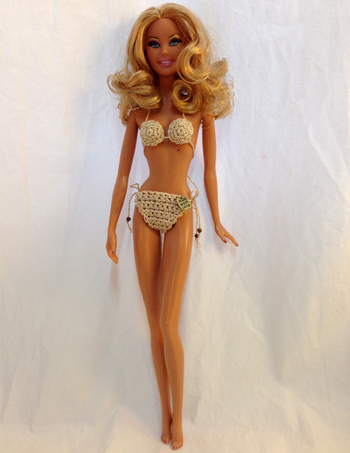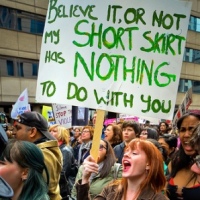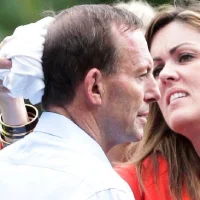A few days ago I read this piece in New Matilda by philosopher Dr Mark Manolopoulos on the coexistence of an accepted hyper-sexualistion of children, and strongly condemned paedophilia. The fact that the former is condoned while the latter is condemned suggests a societal hypocrisy that is shameful, is the crux of his argument.
Although Dr Manolopoulos stresses that he makes no correlation between the two, the fact that he situates their coexistence in the realm of the hypocritical and shameful strongly suggests that he assumes a connection of some kind. Without a connection there is no hypocrisy, and there isn’t any shame either.
The first question is one we’ve been debating on Sheep for a few years now: are children hyper-sexualised?
There is only one, extremely narrow representation of female sexuality that is imposed on young girls. The grotesque image heading this text is an example of an ideal of physical sexuality that promises gratification to any male who is attracted in spite of, or because of, its lack of subtlety.
It’s a mainstream wet dream. Consequently, many women strive to emulate the impossible plasticity of the Barbie doll, and some women inflict the same struggle on their daughters in a ghastly mother-daughter bonding that to this observer, does not speak of hyper-sexualisation as much as it does of a desperate desire to be desired, and for the daughters to vicariously gratify the adult woman’s need.
A man or a woman who looks at a child in “sexy” adult clothing and make up and thinks, gawd, she’s so sexy, has something terribly awry with their perceptions and desires. The child is still a child, albeit a dressed-up child, and the adult who cannot tell the difference between dress-ups and the real is sexualising the child rather than seeing the child, and needs urgent assistance.
Can anyone in their right mind really look at a dressed-up child and see her as a sex object?
How many mothers who dress their daughters “sexily” are actually pimping them out to paedophiles? Practically none, I’d guess.
There is no proven correlation between the manner in which young girls are dressed, and their vulnerability to paedophiles. If there was, Dr Manolopoulos might have an argument, but there isn’t, and he doesn’t. Quite apart from the fact that many victims of child sexual assault are boys, who aren’t dressed in anything other than ordinary clothes.
The implication of the doctor’s thesis is the same old same old: girls and women will be attacked because of what we’re wearing. Paedophiles aren’t responsible for their crimes: little girls looking “sexy” provoked them, they couldn’t resist, and their mothers are to blame.
His remedy is, yes you guessed it, ban things.
Personally, I wouldn’t choose to dress my daughter, if I had one, in a manner that is Barbie sexual, but then I don’t dress myself like that either, except once I was in a burlesque show and that was fun.
Blaming paedophilia, or any sexual assault at all on the so-called “hyper- sexualisation” of the victim is yet again shifting the responsibility from the perpetrator, where it belongs, to the victim, where it doesn’t. This is the most shameful hypocrisy society urgently needs to address, but how much easier to demand the banning of clothing and music videos.
We don’t get raped because we wiggle our hips, no matter what our age. We get raped because rapists rape us. How about society tells rapists not to do that, and leaves us to dress ourselves and our daughters however we wish, without having to fear for our safety?








































Recent Comments